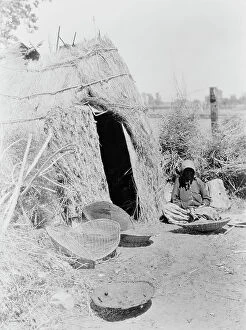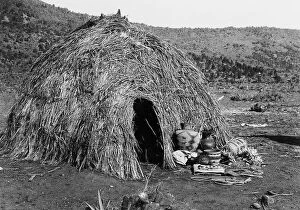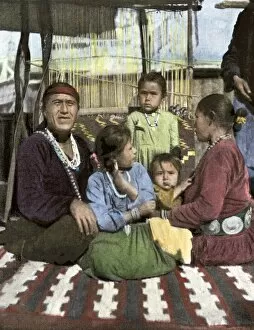Wickiup Collection
The Apache warriors stood tall and proud, their young faces filled with determination
For sale as Licensed Images
Choose your image, Select your licence and Download the media
The Apache warriors stood tall and proud, their young faces filled with determination. In the year 1873, near Camp Apache in Arizona, they gathered together for a moment captured in time. Surrounding them were their humble abodes - wickiups, traditional dwellings of the Apache people. These structures provided shelter and protection for the Native Americans as they navigated through their daily lives. Constructed with a cluster of straight poles and interwoven framework, these wickiups showcased the ingenuity and resourcefulness of the Apache tribe. In 1882, another glimpse into an Apache camp revealed one warrior wearing a partial wickiup on his back. It was a testament to their nomadic lifestyle, always ready to move at a moment's notice. Fast forward to 1903 when Edward Curtis immortalized an Apache wickiup dwelling through his lens. The photograph depicted the simplicity yet functionality of these structures that blended harmoniously with nature. Outside Camp Apache in Arizona during that same era, groups of Coyotero Apaches could be seen congregating near their wickiups. These temporary homes served as gathering places where stories were shared and traditions preserved. Meanwhile, across southwestern United States in 1873, Navajo Native Americans also embraced this traditional form of housing within their camps. Wickiups became symbols of unity among different tribes who found solace under its protective roof. A digital illustration brought forth an artistic representation showcasing the intricate details woven into each pole and framework that formed these unique dwellings. It highlighted how craftsmanship played an integral role in creating spaces that offered both comfort and security. Lastly, we catch a glimpse into Native American spirituality as we witness a medicine man concocting potent potions accompanied by sacred rattles. Within these hallowed walls made from wood and natural materials lay ancient wisdom passed down through generations - secrets whispered only within the confines of those sacred spaces.
















